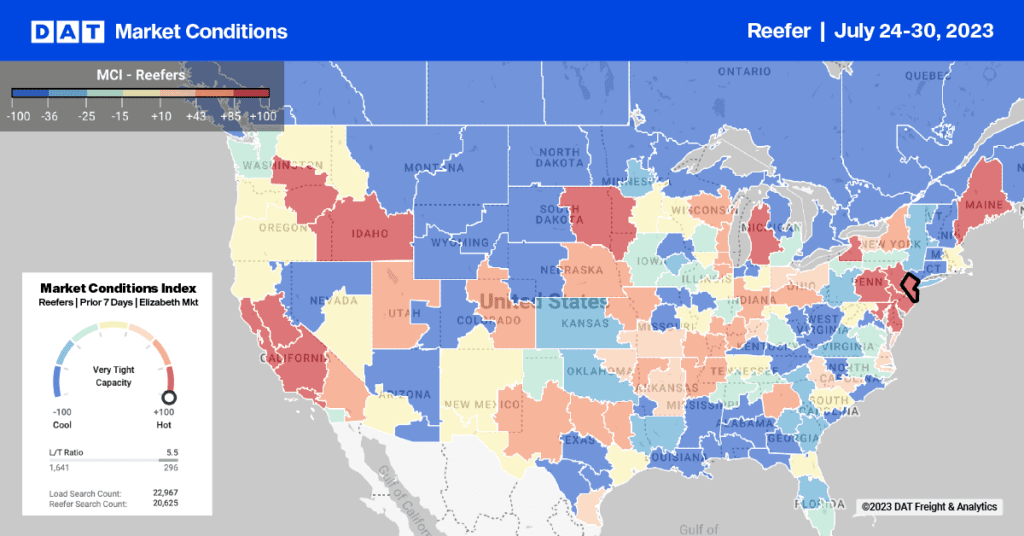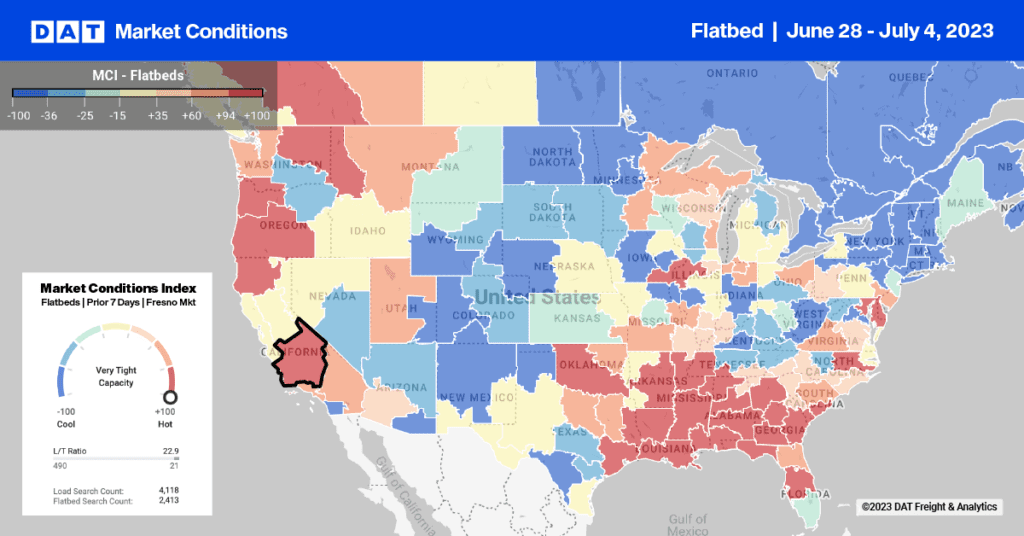I am usually pretty good at forecasting price moves in the spot freight market. I’ve been a pricing analyst in the freight industry for 29 years, and I have been focusing on the spot market and the DAT Truckload Rate Index for the past four years, so I thought I had seen just about everything. I have to admit, however, that the past few weeks have introduced some unique patterns that are not at all typical of the season.
Not a Typical November
By this time in November, we usually see a slowdown in freight movement, especially on the spot market. Shippers are calling on their regular carriers in the top positions of the rating guide, and those carriers have plenty of trucks. Spot market loads are offered in a handful of challenging lanes for shippers and also in the lanes typically identified as ‘backhaul’ to save money, so brokers aren’t getting quite as many calls, and there isn’t as much competition for trucks. Rates start to slide, and they stay low until spring.
Not this year. It’s November, and truckload rates and volumes have reversed course for all equipment types, especially vans. Flatbed pricing is strong, but there doesn’t seem to be as much sustained increase apart from a short-term spike that could be attributed to disaster relief and moving heavy equipment towards the affected areas.
Sandy and Christmas
There are a few different factors at work. Hurricane Sandy has had a huge impact, of course. The storm left devastation in its wake, cutting a broad swath through the most populous region of the U.S. Millions of people were affected, some are still without electricity, others are trying to clean and repair their flood-damaged homes, perhaps grateful to still have homes at all. You might expect consumption patterns to change for Sandy’s victims. Home-improvement stores and mass merchants are expected to do well in Q4, but a study quoted in Chain Store Age predicts that the giant storm will have little to no impact on the upcoming Christmas shopping season.
The study was based in part on holiday shopping in other years that included major disasters, and concluded that a hurricane or earthquake may delay demand or drive it online when local stores are inaccessible, but most consumers do not make big changes in their purchase plans as a result. Christmas nationwide is expected to yield a modest boost of 3% to 4% compared to last year. That’s not expected to match last year’s 5.8% increase, but rather fall more in line with the 3.7% year-over-year growth in 2012 back-to-school purchases.
Retailers must have exercised caution this year, as it appears they waited until the last minute to build holiday inventories. A late burst of imported goods arrived at major sea ports last week, and vans were suddenly in high demand. Not coincidentally, outbound van rates rose from Los Angeles, and they now average $2.11 per mile. Between the import traffic, a bumper crop of potatoes and hurricane-related relief and restocking, van rates rose $0.07 nationwide in the past two weeks, to $1.90 per mile including fuel. This is truly remarkable.
Reefers to the Rescue
Reefer traffic has come on like gangbusters in the past two weeks, with truck shortages reported by the USDA in Washington state and the Red River Valley Region on the Minnesota-North Dakota border. There is also an extended harvest in Northern California, the Pacific Northwest and Colorado, giving us late, high volumes of domestic fruit and vegetable. This was somewhat unexpected, because the prolonged drought this summer destroyed crops and increased prices for produce, but exerted a moderating effect on reefer rates at the height of the season.
The national average rate for reefers rose four cents in as many days last week, and the load-to-truck ratios have been soaring. That indicates that freight availability is outstripping truck capacity on the spot market by a factor of nearly 6 to 1 across most of the country, as depicted in this recent Hot Market Map, below. This map is a visual representation of the reefer load and truck posts on DAT Load Boards on Wednesday, November 14.

This Hot Market Map from November 14 depicts intense demand for reefers — and relatively limited capacity — throughout most of the U.S. and Canada.


